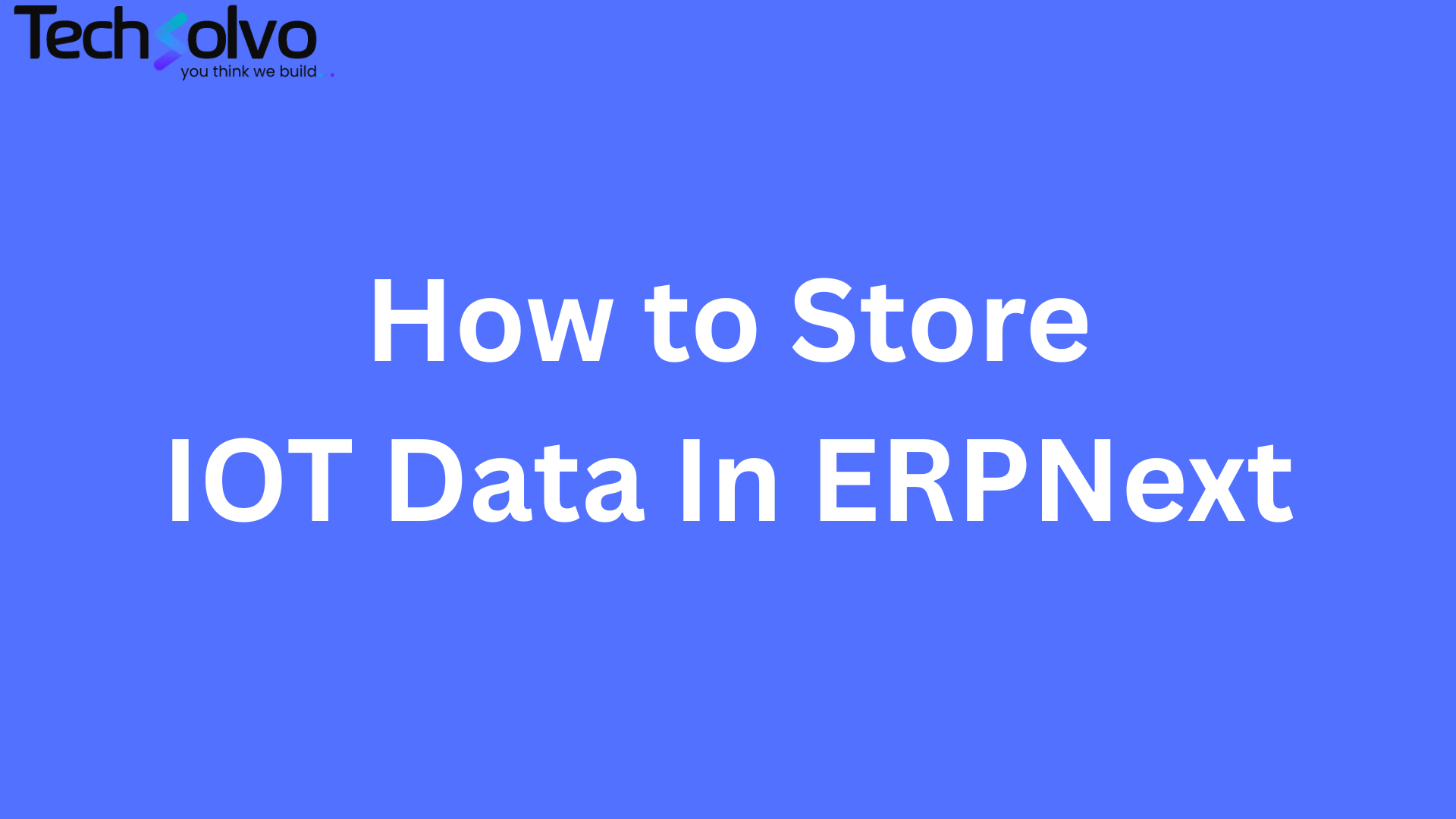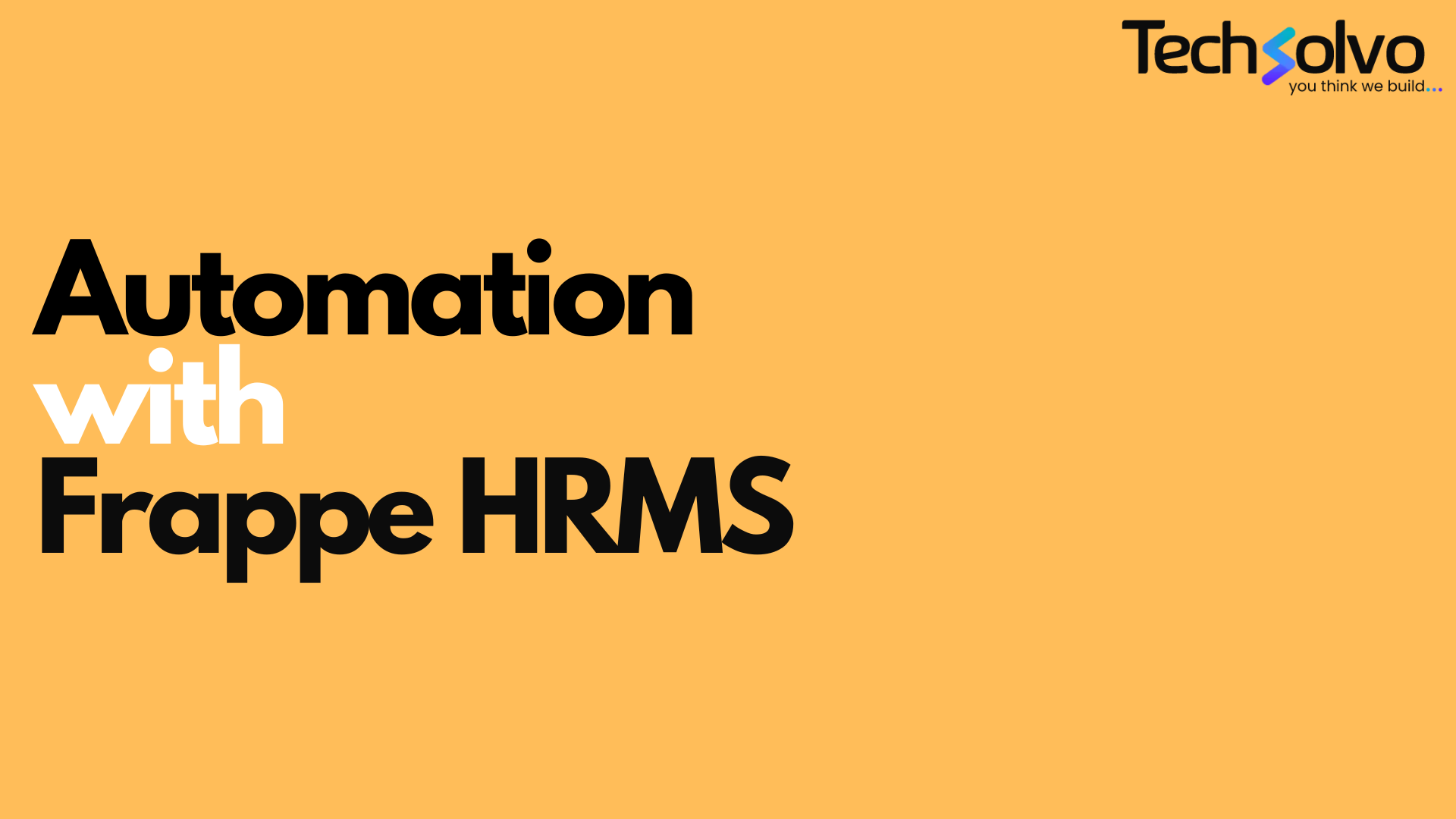Revolutionize Your Business with Techsolvo's Enterprise Machine Learning Development Services.
-
Tailored Machine Learning Solutions: Discover customized machine learning algorithms designed to meet your enterprise's specific needs, optimizing processes, and enhancing decision-making with Techsolvo's expert development services.
-
Predictive Modeling for Strategic Insights: Harness the power of predictive modeling to gain strategic insights into future trends and patterns, empowering your business to make informed decisions and stay ahead in a competitive market landscape.
-
Seamless Integration and Workflow Optimization: Techsolvo ensures a smooth integration of machine learning solutions into your existing enterprise workflows, driving operational efficiency and providing a seamless user experience for enhanced productivity.
-
Comprehensive AI Consulting: Benefit from Techsolvo's AI consulting services, guiding your enterprise through the strategic implementation of machine learning. Get expert advice on adopting and maximizing the potential of AI technologies to fuel your business growth.
-
Empowering Your Team with Training Programs: Elevate your team's capabilities through Techsolvo's training programs, equipping them with the knowledge and skills needed to leverage enterprise machine learning effectively. Foster a culture of innovation and continuous improvement within your organization.
Frequently Asked Questions
Machine learning is like teaching computers to learn from examples to make predictions or decisions, instead of explicitly programming them for a task, similar to how humans learn from experiences. It's about making computers smarter by allowing them to improve their performance over time. It's a powerful tool that has applications in various fields, from healthcare to finance to entertainment.
The key difference between supervised and unsupervised learning lies in the presence or absence of labeled output data during the training phase. Supervised learning involves learning from labeled examples to make predictions on new data, while unsupervised learning focuses on discovering patterns or structures in unlabeled data without explicit guidance on the output.
The bias-variance tradeoff is the balance between the error introduced by approximating a real-world problem and the amount of flexibility the model has. High bias (underfitting) and high variance (overfitting) are inversely related, and finding the right balance is crucial for model performance.
AI is the broader concept of creating intelligent machines, while Machine Learning is a specific approach within AI that involves building systems capable of learning and improving from data. Machine Learning is a tool or technique used to achieve AI goals, and AI can encompass a variety of methods beyond just Machine Learning.
Today we can see many examples of machine learning in the real world. We may or may not be aware that machine learning is used in various applications like – image recognition, automatic translation, self-driving cars, fraud detection, optimizing energy consumption in buildings, personalizing virtual assistants like Siri and Alexa, and beyond! It's truly revolutionizing how we live, work, and interact with the world around us.
TensorFlow is an open-source machine learning framework developed by Google, widely used for building and training deep learning models.
You can install TensorFlow using pip, a Python package manager, with the command: pip install tensorflow.
Tensors are multidimensional arrays, the fundamental data structure in TensorFlow, representing input, output, and intermediate data in the model.
You can create a neural network using the high-level Keras API within TensorFlow, defining layers, activation functions, and compiling the model with loss functions and optimizers.
Techniques such as dropout layers and regularization can be applied to prevent overfitting, enhancing the model's generalization performance in TensorFlow.
MXNet employs a parameter server architecture and efficient communication protocols to enable seamless distributed training across multiple GPUs and machines.
PyTorch's dynamic computation graph allows for more flexibility during model development, while TensorFlow uses a static graph approach.
PyTorch is an open-source machine learning library used for developing deep learning models, emphasizing dynamic computation graphs.
Tensors are fundamental data structures in PyTorch, analogous to arrays, used for efficient representation and computation in deep learning.
PyTorch simplifies neural network training with its intuitive API. Define the model, choose a loss function, and optimize using backpropagation.
PyTorch has gained popularity in both academia and industry due to its ease of use, dynamic computation, and extensive community support.
MXNet is an open-source deep learning framework that enables developers to build and train neural networks efficiently.
MXNet stands out for its dynamic computation graph, which allows flexible model construction and optimization for various applications.
MXNet supports multiple languages such as Python, Scala, and Julia, providing developers with a diverse set of options for implementation.
Yes, MXNet is designed to facilitate both research experimentation and scalable deployment in production environments, making it versatile for diverse needs.
Scikit-learn is a popular machine learning library in Python. It provides simple tools for data analysis and modeling, making it widely used in the data science community.
Install scikit-learn using pip: pip install scikit-learn. Ensure dependencies like NumPy and SciPy are installed. For advanced features, install additional libraries mentioned in the documentation.
Scikit-learn offers a variety of algorithms, including linear regression, decision trees, support vector machines, and k-means clustering. Choosing the right algorithm depends on the problem and data characteristics.
Use SimpleImputer to replace missing values. Specify the strategy (mean, median, mode) based on data characteristics. Remember to fit the imputer on the training set and transform both training and testing sets.
Utilize metrics like accuracy, precision, recall, and F1 score for classification. For regression, use metrics like mean squared error. Implement cross-validation to assess model performance across different subsets of the data.
Keras is an open-source deep learning API written in Python. It serves as a high-level interface for neural networks, facilitating efficient model building and training.
Keras is now integrated into TensorFlow, functioning as its official high-level API. It simplifies the process of building and training neural networks, enhancing TensorFlow's usability.
Yes, Keras is beginner-friendly due to its simple syntax and modular design. It abstracts complex operations, making it accessible for those new to deep learning and neural networks.
Initially, Keras supported multiple backends like Theano and Microsoft Cognitive Toolkit, but with TensorFlow 2, it exclusively supports TensorFlow as the backend.
Keras Callbacks are functions used to perform actions at various stages during training. Examples include ModelCheckpoint for saving the model and EarlyStopping to halt training based on a specified criterion.
IBM Watson Studio is a cloud-based platform for data scientists, developers, and analysts to collaborate on building, deploying, and managing AI models. It offers tools for data preparation, visualization, model training, and deployment, all hosted on the IBM Cloud.
They build, deploy, and manage AI solutions on Azure's cloud platform, like predicting customer churn, optimizing ad campaigns, or analyzing medical images.
Programming chops in Python and R are a must, along with strong data wrangling and model training skills. Understanding Azure services like Azure Machine Learning and Databricks is key.
Absolutely! Machine learning is booming, and Azure devs are in high demand. Expect a challenging, rewarding role with the potential for big salaries and career growth.
Microsoft offers fantastic Azure Machine Learning training and certifications. Online communities and tutorials abound too!
Not quite! Communication and collaboration skills are crucial for working with stakeholders and understanding business needs. So, think beyond just algorithms.
SageMaker excels at streamlining the ML workflow: data prep, model building, training, and deployment. Think notebooks for experimentation, pre-built algorithms for quick wins, and scalable infrastructure for handling demanding tasks.
While data science expertise is ideal, SageMaker offers tools for various skill levels. Beginners can leverage drag-and-drop interfaces like SageMaker Canvas, while seasoned developers appreciate the flexibility of custom containers and notebooks.
SageMaker operates on a pay-as-you-go model, so you only pay for the resources you use. You can optimize costs by choosing efficient instance types and utilizing built-in cost estimators.
Security is baked into SageMaker. It offers features like role-based access control, data encryption, and VPC configurations to ensure your data and models stay protected.
Amazon provides extensive documentation, tutorials, and code samples. There's also a thriving community of developers sharing tips and best practices.
AI Platform is a one-stop shop for building, training, and deploying machine learning models on Google Cloud. Developers who utilize it are at the forefront of AI implementation, leveraging tools like Vertex AI Workbench, Notebooks, and Pipelines to streamline their workflow.
Strong fundamentals in Python, Machine Learning (ML) libraries like TensorFlow or PyTorch, and cloud computing are essential. Additionally, an understanding of DevOps principles and experience with CI/CD pipelines are valuable assets.
The possibilities are boundless! You can specialize in specific AI areas like computer vision or natural language processing, become an ML engineer building production-ready models, or even transition into research-oriented roles.
Its managed infrastructure takes care of tedious tasks like server provisioning, allowing developers to focus on the exciting parts of model creation. Additionally, pre-built AI solutions and integration with other Google Cloud services like BigQuery offer a comprehensive ecosystem for AI projects.
Google Cloud offers extensive documentation, tutorials, and code samples through the AI Platform website. The platform also has a vibrant community of developers with active forums and user groups for knowledge sharing and support.
Familiarity with data science is recommended, but Watson Studio caters to various skill levels. Beginners can use visual tools and pre-built models, while experienced users can code custom models with Python, R, or Scala.
Yes, there's a free Lite plan with limited resources for learning and tinkering. For serious projects, paid plans offer more storage, compute power, and advanced features.
Watson Studio simplifies the AI development lifecycle, reduces model development time, and fosters collaboration between teams. Its open architecture integrates with popular open-source tools and frameworks.
IBM Developer offers extensive documentation, tutorials, and learning resources on Watson Studio. You can also join the vibrant online community for support and knowledge sharing.
Strong Python and R are essential, along with familiarity with machine learning algorithms and frameworks like scikit-learn or TensorFlow. Understanding distributed computing concepts like H2O's distributed in-memory architecture is a plus.
H2O.ai offers various roles, from building core AI engines to developing user-facing applications like Driverless AI and H2O Hydrogen Torch. You can contribute to open-source projects, research cutting-edge algorithms, or focus on specific industries like healthcare or finance.
Explore the H2O.ai developer portal for tutorials, documentation, and sample code. Participate in online hackathons and Kaggle competitions using H2O tools. Contribute to open-source projects like H2O-3 or Driverless AI.
H2O.ai fosters a collaborative and innovative culture. Developers work closely with data scientists, engineers, and product managers on real-world AI challenges. Flexible work arrangements and a global team add to the dynamic environment.
H2O.ai is a rapidly growing company with a mission to democratize AI. As a developer, you'll gain valuable experience working on cutting-edge technology and have the opportunity to shape the future of AI.
LightGBM, short for Light Gradient Boosting Machine, is a decision tree-based algorithm gaining traction in machine learning for its speed, efficiency, and accuracy. It's especially adept at handling large datasets and complex learning tasks.
LightGBM developers are in high demand due to the algorithm's rising popularity. They possess valuable skills in data handling, model optimization, and algorithm implementation, making them attractive candidates for various machine learning roles.
Strong proficiency in programming languages like Python and R is essential. Familiarity with machine learning concepts like gradient boosting, decision trees, and optimization techniques is crucial. Additionally, expertise in data manipulation libraries like pandas and scikit-learn is highly sought-after.
LightGBM developers can pursue diverse career paths in machine learning engineering, data science, research, and development. They can work in various industries like finance, healthcare, e-commerce, and more.
Numerous online resources are available for learning LightGBM, including official documentation, tutorials, video courses, and community forums. Additionally, participating in hackathons and online coding challenges can provide valuable hands-on experience.
XGBoost's speed, accuracy, and flexibility in tackling diverse problems like churn prediction, fraud detection, and recommendation systems make it a powerful tool. Developers are increasingly adopting it to build robust and efficient machine learning models.
Strong understanding of machine learning fundamentals, Python programming proficiency with libraries like scikit-learn, and data preparation skills are crucial. Familiarity with optimization techniques and hyperparameter tuning is also valuable.
The demand for XGBoost expertise is booming across various industries like finance, healthcare, and tech. Developers with this skillset can find lucrative opportunities as Machine Learning Engineers, Data Scientists, and Research Scientists.
Numerous online tutorials, courses, and documentation are available. Coursera, edX, and Kaggle offer excellent XGBoost learning resources. The official XGBoost documentation is also a valuable reference.
XGBoost integration with deep learning frameworks like TensorFlow and PyTorch is gaining traction. Additionally, research in explainable AI (XAI) is making XGBoost models more interpretable, further boosting its appeal.
CatBoost is an open-source gradient boosting framework known for its accuracy and efficiency, especially with categorical features. Developers love its speed, handling of imbalanced data, and built-in feature engineering tools.
CatBoost devs are in high demand due to the framework's popularity in various industries. Their skillset opens doors to exciting projects in finance, healthcare, and e-commerce, with potentially higher salaries compared to general ML developers.
Strong understanding of machine learning fundamentals, Python programming, and experience with other gradient boosting libraries like XGBoost are crucial. Familiarity with statistical analysis and data visualization tools is also valuable.
The CatBoost team provides comprehensive documentation, tutorials, and code examples. Online communities, forums, and active social media channels offer peer support and learning opportunities.
With its continuous advancements and growing adoption, CatBoost shows immense promise. Developers who master this framework can stay ahead of the curve and contribute to cutting-edge AI projects in the years to come.
Databricks Developers blend ML expertise with proficiency in the Databricks platform, including Spark, MLflow, and Delta Lake. Familiarity with Python and Scala is crucial, along with strong analytical and problem-solving abilities.
Options abound! You could specialize in building and deploying ML pipelines, focus on data engineering for ML, or delve into research and development of new ML features within the Databricks ecosystem.
Databricks offers a unified platform for the entire ML lifecycle, from data preparation to model training and deployment. This simplifies workflows, boosts efficiency, and fosters collaboration among data scientists and engineers.
Absolutely! As companies increasingly embrace big data and ML, the need for skilled Databricks Developers is skyrocketing. Their ability to bridge the gap between ML and big data infrastructure makes them highly sought-after.
Databricks University offers comprehensive training programs and certifications specifically designed for Databricks Developers. Additionally, the vibrant Databricks community provides valuable resources and support through forums, meetups, and conferences.
It's an open-source AutoML library by Amazon, aiming to simplify AI for developers. With just a few lines of code, you can train powerful deep learning models for images, text, or tabular data.
Both! Experts can fine-tune advanced options, while beginners can harness cutting-edge ML without getting bogged down in technicalities. AutoGluon democratizes AI, making it accessible to everyone.
Images, text, and tabular data – from spreadsheets to databases – AutoGluon tackles them all! It seamlessly adapts to your specific data format, letting you focus on extracting insights and building impactful applications.
Buckle up for competitive performance! AutoGluon leverages state-of-the-art algorithms and optimizes models behind the scenes, ensuring you get top-notch predictions without the manual sweat.
Dive into the vibrant AutoGluon community! The open-source project welcomes contributions and has extensive documentation, tutorials, and examples to guide you on your ML journey.
Core ML simplifies integrating ML models into iOS and macOS apps. Devs focus on building the app, leaving model training and optimization to Apple's tools. Plus, Core ML models run efficiently on Apple devices, saving battery and resources.
A strong understanding of Swift or Objective-C and machine learning fundamentals is crucial. Familiarity with Python and deep learning frameworks like TensorFlow or PyTorch is also beneficial for model creation.
Apple's Create ML tool lets you build basic image and text classification models without writing code. Playgrounds in Xcode offer interactive tutorials, and the Core ML documentation provides in-depth guidance.
Core ML devs are in high demand, especially for building intelligent features in apps across healthcare, finance, and AR/VR. Expertise in on-device ML is particularly valuable.
Core ML currently supports a limited range of model types, and complex models might require conversion from other frameworks. Performance can vary depending on the model and device.
JAX is a Python library for high-performance scientific computing, especially machine learning. It combines NumPy's ease with automatic differentiation for training models, XLA for GPU/TPU acceleration, and functional programming for clean, composable code.
JAX shines in cutting-edge research! Its flexibility lets you define custom computation, leverage existing libraries like NumPy, and seamlessly integrate with TensorFlow/PyTorch for data handling. It excels in non-standard architectures and higher-order optimization.
If you know NumPy, JAX's core is familiar. But its functional style takes some practice. Resources like "Deep Learning with JAX" and the JAX ecosystem libraries (Flax, Haiku) offer gentle learning curves.
JAX is on the rise! DeepMind, Google AI, and other ML leaders use it, and demand is growing for skilled developers. So, mastering JAX can give you a future-proof edge in cutting-edge ML research and development.
Dive into resources like the JAX docs, tutorials, and online communities. Experiment with simple examples, contribute to open-source projects, and don't hesitate to ask questions! The JAX community is vibrant and welcoming.
It's a high-performance inference engine for running machine learning models exported in the ONNX format. Think of it as a universal translator for AI models, letting them work seamlessly across different frameworks and hardware.
Freedom! Develop models in your favorite framework (PyTorch, TensorFlow, etc.) and deploy them anywhere with optimized performance. It also simplifies deployment pipelines and reduces maintenance headaches.
Nope! ONNX Runtime boasts a clean API and comprehensive documentation. Plus, tons of pre-built tools and community support make it easy to get started.
A wide range! From CPUs and GPUs to specialized AI accelerators. ONNX Runtime taps into hardware-specific optimizations for maximum performance.
You can visit the official website (onnxruntime.ai) for tutorials, documentation, and community resources. You'll also find vibrant communities on Slack and GitHub!
They're pre-trained deep learning models for natural language processing (NLP) tasks like text classification, translation, and question answering. Think of them as NLP powerhouses ready to fine-tune for specific needs.
They're open-source, easy to use, and constantly evolving with new models and tasks. Plus, the Hugging Face Hub acts as a vibrant community marketplace for sharing models and datasets, accelerating development.
Basic Python and familiarity with NLP concepts are helpful, but Hugging Face offers beginner-friendly tutorials and notebooks. You can even leverage pre-built pipelines for common tasks.
Explore example notebooks for specific tasks like sentiment analysis or text summarization. Don't hesitate to join the active community forum for troubleshooting and inspiration.
Hugging Face Transformers are pushing the boundaries of NLP, enabling developers to build intelligent applications faster and more effectively. Expect even more powerful models, fine-tuning for specialized domains, and seamless integration with other AI tools.
Insights
To properly understand the things that are prevalent in the industries, keeping up-to-date with the news is crucial. Take a look at some of our expertly created blogs, based on full-scale research and statistics on current market conditions.

Unlocking the Power of Data Analytics for IoT Devices with ERPNext
Explore how businesses can gain real-time insights from IoT devices using modern data ana…

How to Store IoT Data Inside ERPNext: A Complete Guide for IoT Companies
A complete guide for IoT and manufacturing companies on integrating machine-generated dat…

Automation in Human Resource Management with Frappe HRMS
Discover how HR automation with Frappe HRMS can streamline HR operations, enhance employe…





































